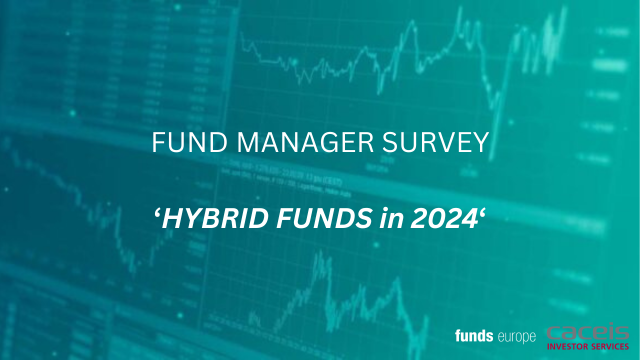Anup Kumar, EVP & global head of services at Linedata, discusses the integration of Generative AI in fund management and its transformative impact.
Navigating AI’s transformative wave: unpacking the impact of Generative AI for fund management In the ever-evolving landscape of fund management, the recent surge in Generative AI (GenAI) adoption has propelled artificial intelligence to the forefront of strategic and operational considerations. In my conversations with clients, peers, and technology experts, I’m struck by the excitement AI generates, particularly in private markets notorious for their highly manual and bespoke operational processes.
Here are seven recommendations for integrating GenAI into the fabric of fund management.
1) Prepare for GenAI’s sweeping impact, particularly in private markets
Generative AI’s transformative potential resonates across the private markets value chain, from investment decision-making to operational efficiency, investor relations, and compliance. GenAI is emerging as a catalyst for democratising information access, with significant benefits for Private Equity and Private Credit firms. By automating high-volume, standardized workflows, AI unlocks valuable time for investment teams, enabling them to focus on strategic thinking and sector specialisation. Successful use cases include research, deal sourcing, investment decision-making, underwriting, due diligence, and back-office automation, where GenAI is transforming processes and enhancing overall efficiency.
2) Plan for and address AI implementation challenges head-on
Successful AI/ML and GenAI implementation demands planning and foresight to navigate challenges around governance, data security, technological change, risk management, and the vital human capital element. Establishing robust governance is critical, particularly as regulators become more hands-on. Data security is paramount, especially with GenAI’s ability to disseminate information widely. A common challenge I’m seeing is the transition from experimental AI projects to industrialisation. This highlights the importance of the human element, from overcoming internal resistance to change to ensuring you have the right skillsets in your organisation. Here, keys to success include knowledge sharing internally and with peers and forming the right partnerships.
3) Recognise and embrace Generative AI’s impact on talent
The advent of GenAI signals a shift in talent dynamics from recruitment to training and retention. Leadership should show empathy and acknowledge concerns around the changing nature of work while emphasising AI’s benefits for individual workers. GenAI’s ability to expedite information retrieval and provide enhanced insights can reduce mundane tasks and pave the way for more fulfilling work experience. At the same time, performing such tasks has traditionally taught junior staff job fundamentals, so training and talent management will need to evolve. In short, however, while traditional roles may change or phase out, embracing change opens doors to exciting opportunities.
4) GIGO still matters: data quality and robust infrastructure
GenAI streamlines data collection, cleansing, and standardisation and offers unprecedented business insights. However, the age-old adage of ‘garbage in, garbage out’ still holds true. Data quality is critical. Strong data governance and security and a robust data infrastructure are the backbone of successful AI projects. Regardless of where you are on your AI journey, acting now to organise data and ensure data quality is fundamental. Information security and cybersecurity are also non-negotiable.
5) Model governance is mandatory for accuracy and believability
While Generative AI democratizes information access, concerns over ‘hallucinations’ or the generation of fictitious facts are valid. These underscore the importance of model governance, from ensuring data quality to implementing clear processes for model training. Transparency is essential to maintain trust within your organisation and with stakeholders, from investors to regulators.
Whether you build your GenAI models in-house or source them externally, ‘model explainability’ – the ability to express how an AI system reached a recommendation, prediction, or decision – is vital for establishing trust and, increasingly, for regulatory compliance. We see hub-and-spoke approaches or federated models to AI governance gaining traction, ensuring centralised oversight over collaborative efforts across departments and functions.
6) Understanding and preparing for AI regulation
The regulatory landscape surrounding GenAI in finance is evolving, with regulators particularly focusing on fairness, bias prevention, and auditability. We expect to see three P’s – Patchwork, Prescriptive, and Proof – define the regulatory approach. Regulation’s patchwork nature arises from the involvement of various national, regional, state, and local governments and agencies, which makes standardisation challenging. Regulation tends to be prescriptive, with greater concern about perceived fairness than understanding the underlying technology. Demonstrating proof of non-bias will become pivotal, with firms needing to show transparency without revealing proprietary algorithms. There will be a fine line between demonstrating your understanding of why an AI model made the decision and revealing your firm’s ‘secret sauce’.
7) Tips for a successful AI journey
Initiating a successful AI journey requires a strategic approach. Starting at the right size, evaluating actionable use cases, staying abreast of AI technology developments, seeking reliable partnerships, and avoiding overhyping are all fundamental. The human element is critical, from understanding and addressing AI’s impact on your workforce to building enthusiastic teams and creating a culture that accepts the need to fail fast at times while learning lessons that lead to long-term success. In our role as a solutions and technology provider, this has meant working with clients to identify and initiate pilot projects with the greatest potential to show rapid proof of value. It has also meant finding ways to bolster our own operations and service delivery using GenAI, from investment data research to software development and cybersecurity. In over 30 years in the industry, I have experienced my share of technological and operational shifts and seen various levels of impact. I am truly excited about the transformative potential of Generative AI and look forward to continuing the conversation with others at various stages of their AI journey.
© 2023 funds europe





